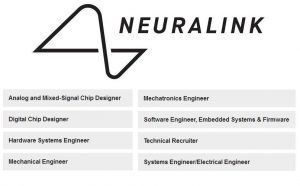Systems and methods for injectable devices
Abstract
The present invention generally relates to nanoscale wires and/or injectable devices. In some embodiments, the present invention is directed to electronic devices that can be injected or inserted into soft matter, such as biological tissue or polymeric matrixes. For example, the device may be passed through a syringe or a needle. In some cases, the device may comprise one or more nanoscale wires. Other components, such as fluids or cells, may also be injected or inserted. In addition, in some cases, the device, after insertion or injection, may be connected to an external electrical circuit, e.g., to a computer. Other embodiments are generally directed to systems and methods of making, using, or promoting such devices, kits involving such devices, and the like.
Classifications
A61N1/05 Electrodes for implantation or insertion into the body, e.g. heart electrode
patents.google.com/patent/WO2015199784A2/en
Syringe-injectable mesh electronics integrate seamlessly with minimal chronic immune response in the brain
PMID: 28533392 PMCID: PMC5468665 DOI: 10.1073/pnas.1705509114
Implantation of electrical probes into the brain has been central to both neuroscience research and biomedical applications, although conventional probes induce gliosis in surrounding tissue. We recently reported ultraflexible open mesh electronics implanted into rodent brains by syringe injection that exhibit promising chronic tissue response and recording stability. Here we report time-dependent histology studies of the mesh electronics/brain-tissue interface obtained from sections perpendicular and parallel to probe long axis, as well as studies of conventional flexible thin-film probes. Confocal fluorescence microscopy images of the perpendicular and parallel brain slices containing mesh electronics showed that the distribution of astrocytes, microglia, and neurons became uniform from 2-12 wk, whereas flexible thin-film probes yield a marked accumulation of astrocytes and microglia and decrease of neurons for the same period. Quantitative analyses of 4- and 12-wk data showed that the signals for neurons, axons, astrocytes, and microglia are nearly the same from the mesh electronics surface to the baseline far from the probes, in contrast to flexible polymer probes, which show decreases in neuron and increases in astrocyte and microglia signals. Notably, images of sagittal brain slices containing nearly the entire mesh electronics probe showed that the tissue interface was uniform and neurons and neurofilaments penetrated through the mesh by 3 mo postimplantation. The minimal immune response and seamless interface with brain tissue postimplantation achieved by ultraflexible open mesh electronics probes provide substantial advantages and could enable a wide range of opportunities for in vivo chronic recording and modulation of brain activity in the future.
Keywords: brain–machine interface; in vivo implants; minimal neuroinflammation; neural probes; ultraflexible macroporous probes.
pubmed.ncbi.nlm.nih.gov/28533392/
METHODS AND SYSTEMS OFPRIORITIZING TREATMENTS , VACCINATION , TESTING AND / OR ACTIVITIES WHILE PROTECTING THE PRIVACY OF INDIVIDUALS
patentimages.storage.googleapis.com/04/24/12/7c8e8238f4ae9d/US20210082583A1.pdf



![Freenom world anonymous DNS resolver e830b9082ef3023ecd0b4401ef444f94eb6ae3d01db3174593f5c570_640[1]](https://cognitive-liberty.online/wp-content/uploads/e830b9082ef3023ecd0b4401ef444f94eb6ae3d01db3174593f5c570_6401-300x225.jpg)
![Phone Hackers: Britain's Secret Surveillance eb34b40b2ff7023ecd0b4401ef444f94eb6ae3d01cb4164292f6c37c_640[1]](https://cognitive-liberty.online/wp-content/uploads/eb34b40b2ff7023ecd0b4401ef444f94eb6ae3d01cb4164292f6c37c_6401-300x300.png)

![Red Herring strategy/fallacy Red_herring[1]](https://cognitive-liberty.online/wp-content/uploads/Red_herring1-300x162.jpg)